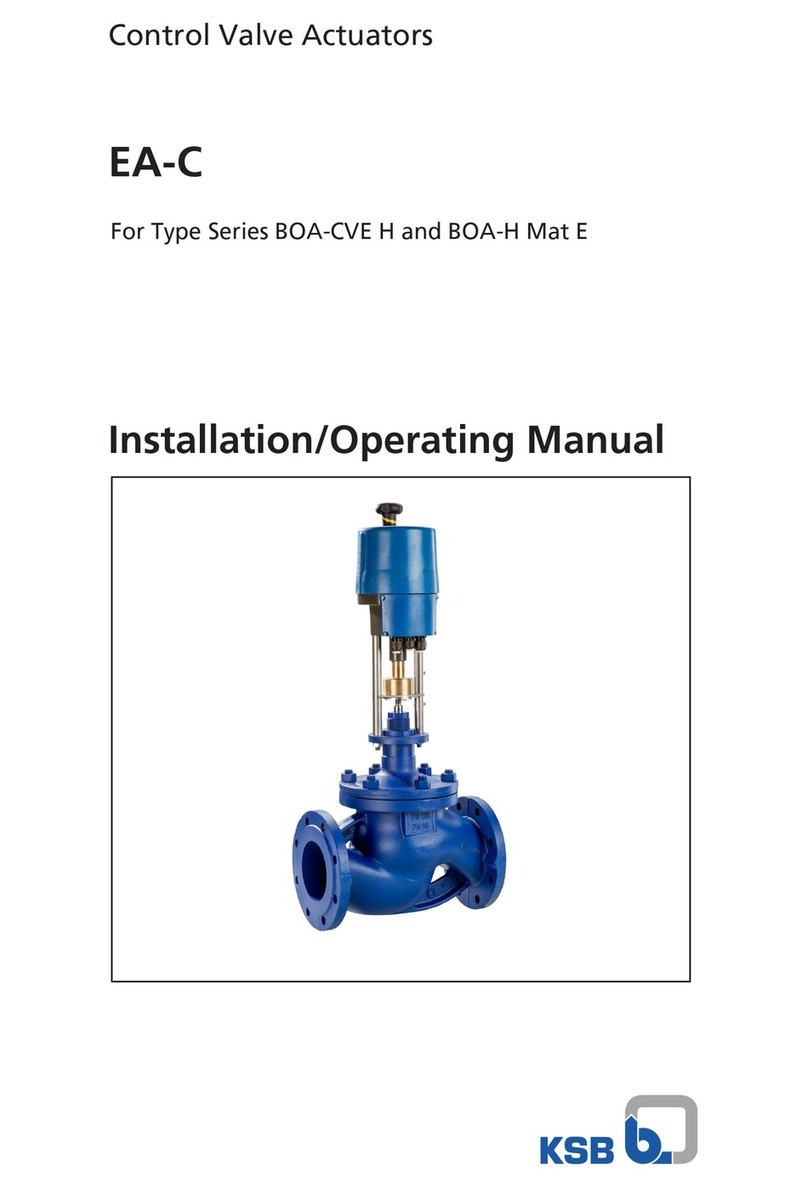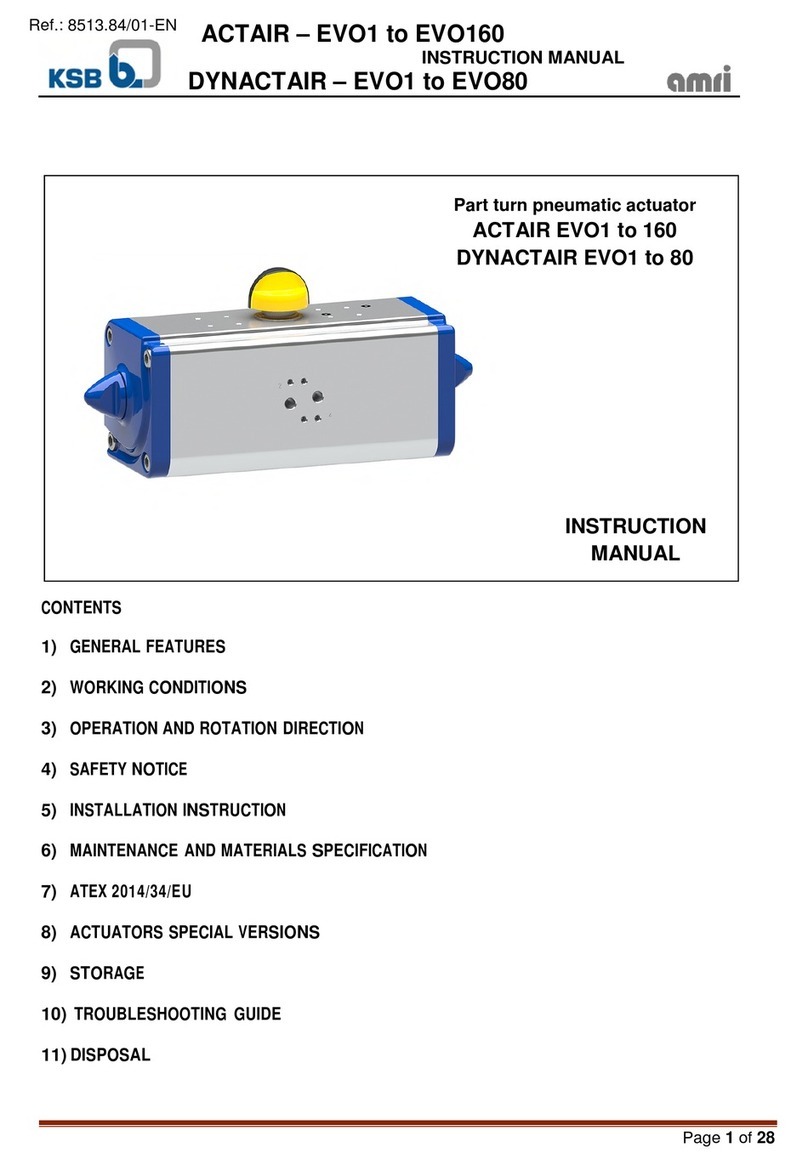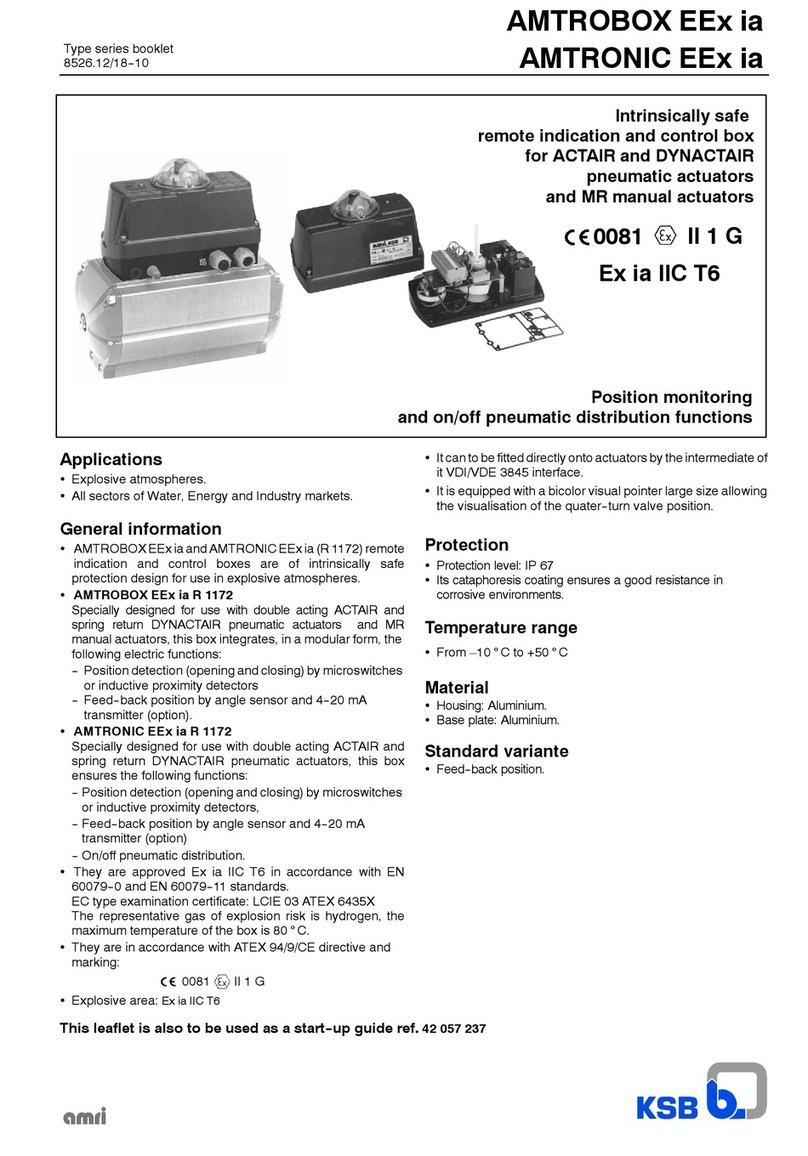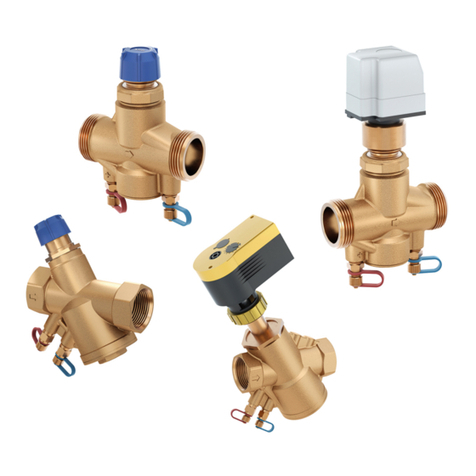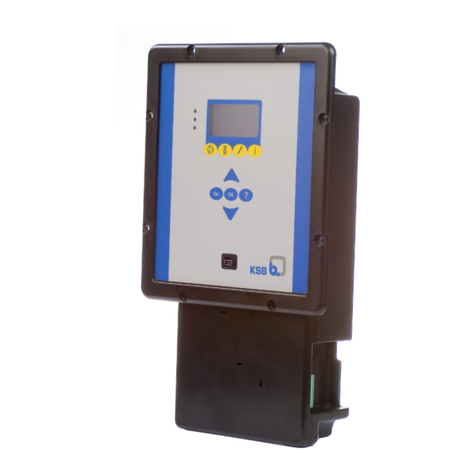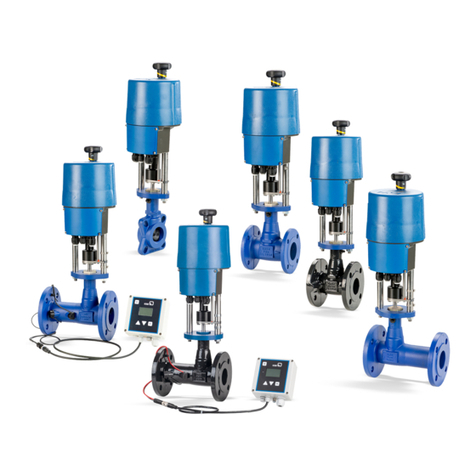
DYNACTAIR 200 to 800 -- MAINTENANCE
8
4 -- ADJUSTMENT OF STANDARD ADJUSTABLE END STOPS (±2°)
REMINDER :
These actuators are equipped with adjustable end stops only in the close position.
Adjustable end stops in open position are fixed and not adjustable.
Adjustable end stops are factory set and need no further adjustment at site.
This is of utmost importance for the perfect tightness of the valve.
After any intervention on the actuator, the correct adjustment of the adjustable end stops must be verified.
If need be, this adjustment could be modified as per the following procedure :
Adjustment to be carried out on the complete unit : valve + actuator
WARNING : Do not damage O--rings 412.4 while adjustment operations
DYNACTAIR 200
Closure function by lack of control fluid : adjustment of closure end stops
-- Put the unit in the open position by pressurising the actuator
-- Unscrew the 3 nuts 920.4
-- Progressively adjust in staggered way and with the same value
the 3 adjustable end stops (measure the overheight compared to
the cylinder head) until the required position is obtained by the
release of the chamber pressure
-- Repeat several times these operations if need be
-- Tighten the 3 nuts 920.4
Opening function by lack of control fluid : adjustment end stops in closure
-- Unscrew the nuts 920.3
-- Unscrew of a few turns 1 of the 2 adjustable end stops
-- Adjust the other adjustable end stop 904 until the required position is obtained by pressurising the chamber and
lock in position nut 920.3
-- Leave the unit under pressure
-- Adjust the second adjustable end stop until contact with the nut 920.1 then lock nut 920.3
DYNACTAIR 400 and 800
Closing or Opening function by lack of control fluid : adjustment end stops in closure
-- Put the unit in the open position by pressurising the actuator
-- Unscrew the 3 nuts 920.4
-- Progressively adjust in staggered way and with the same value the 3 adjustable end stops (measure the overheight
compared to the cylinder head) until the required position is obtained by the release of the chamber pressure
-- Repeat several times these operations if need be
-- Tighten the 3 nuts 920.4
WARNING :
-- Screw clockwise to decrease the valve closure
-- Screw anti--clockwise to increase the valve closure






